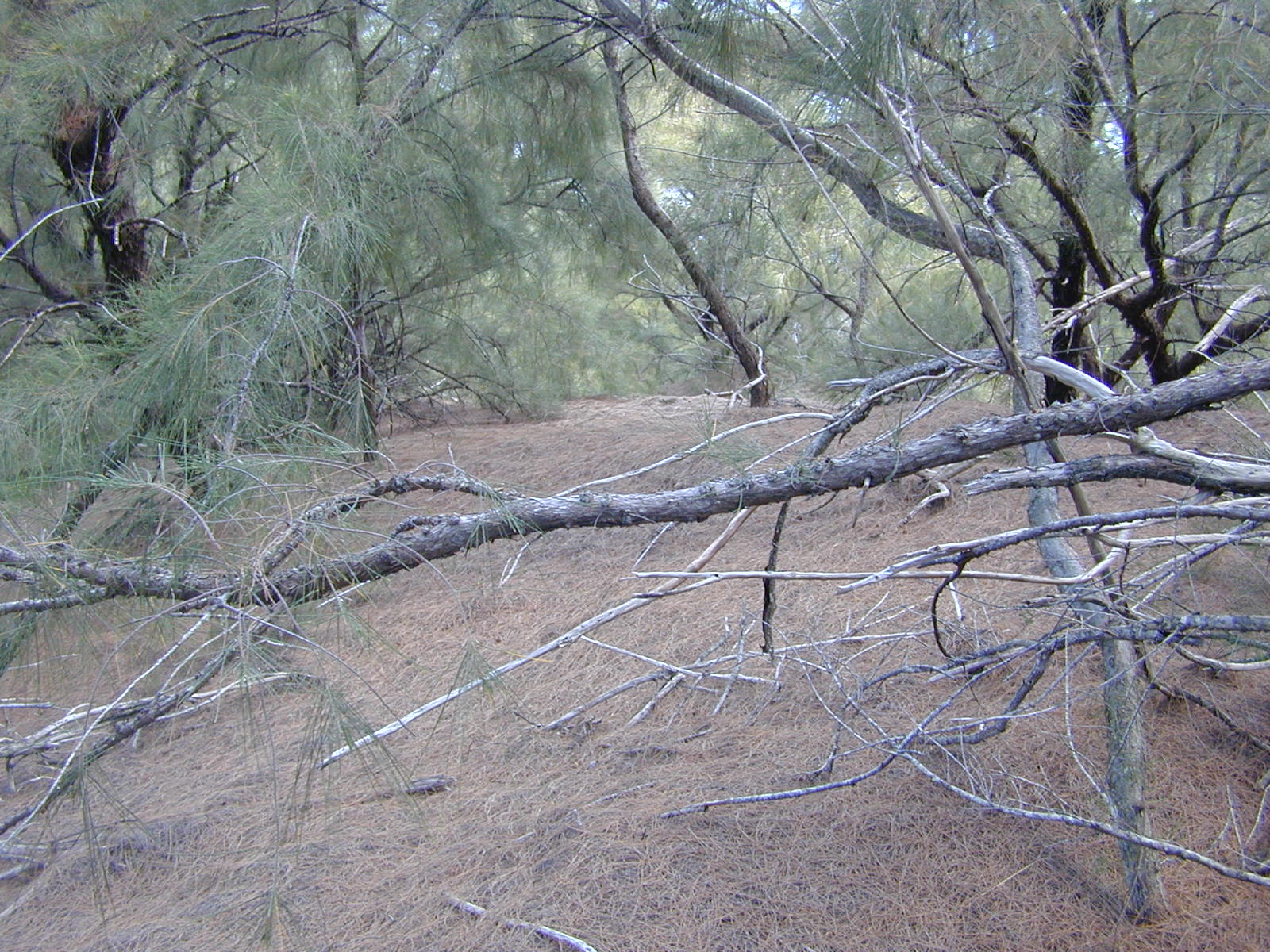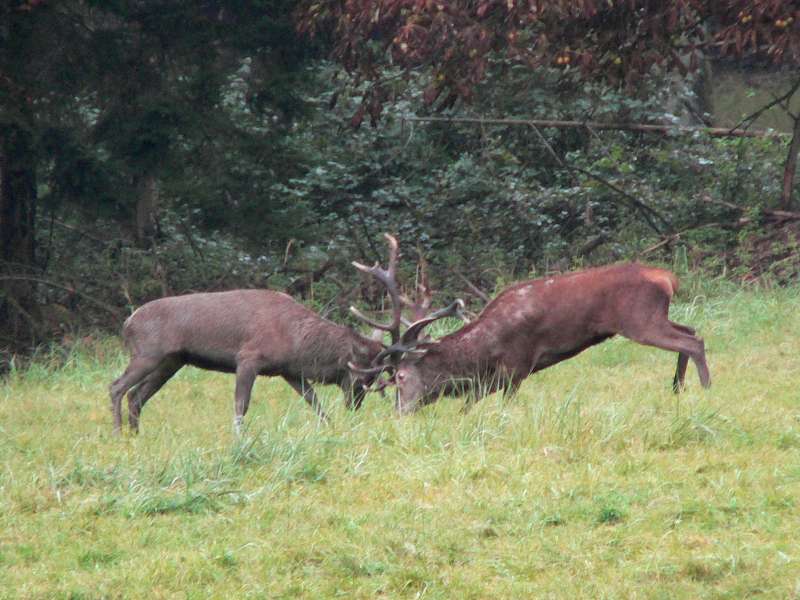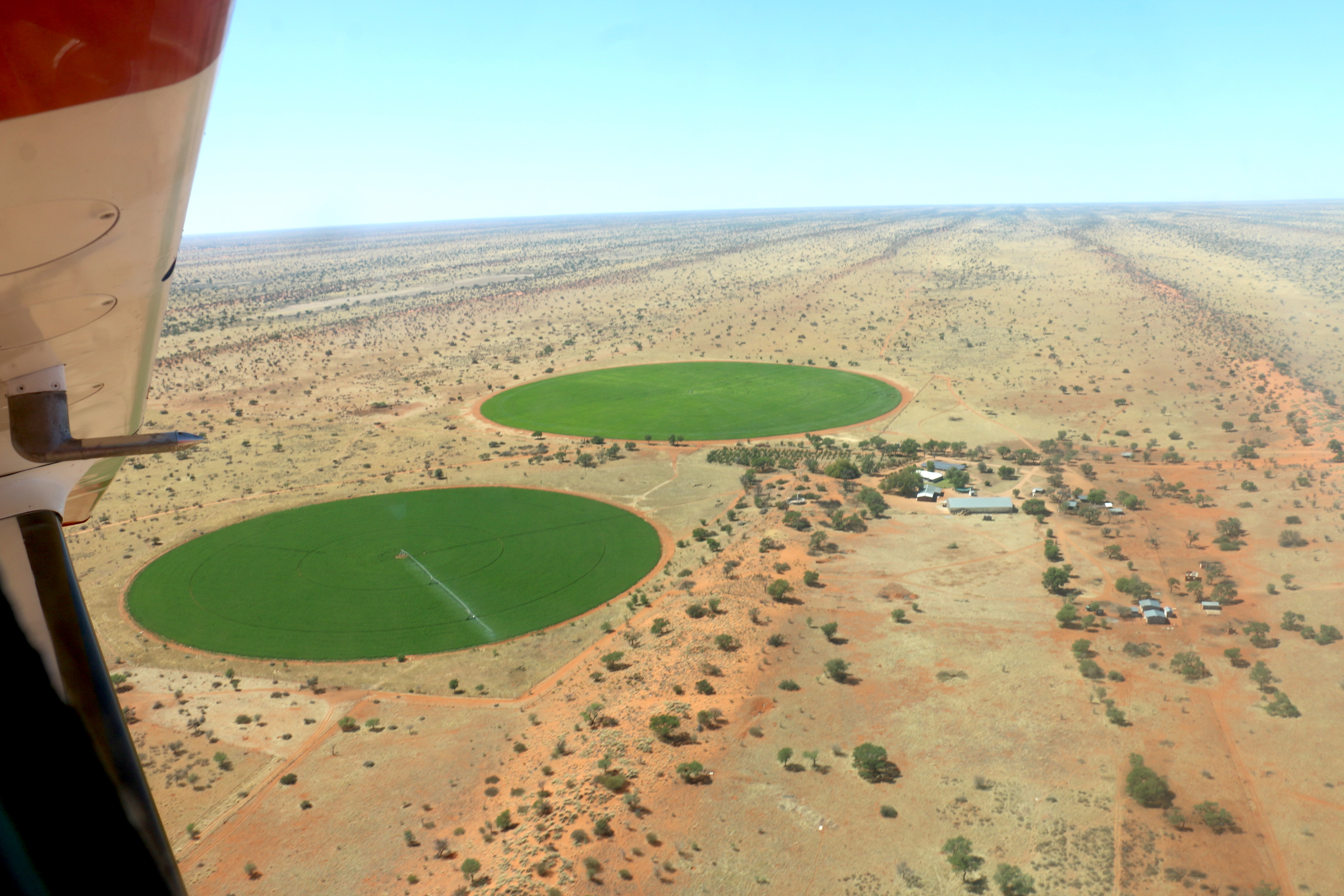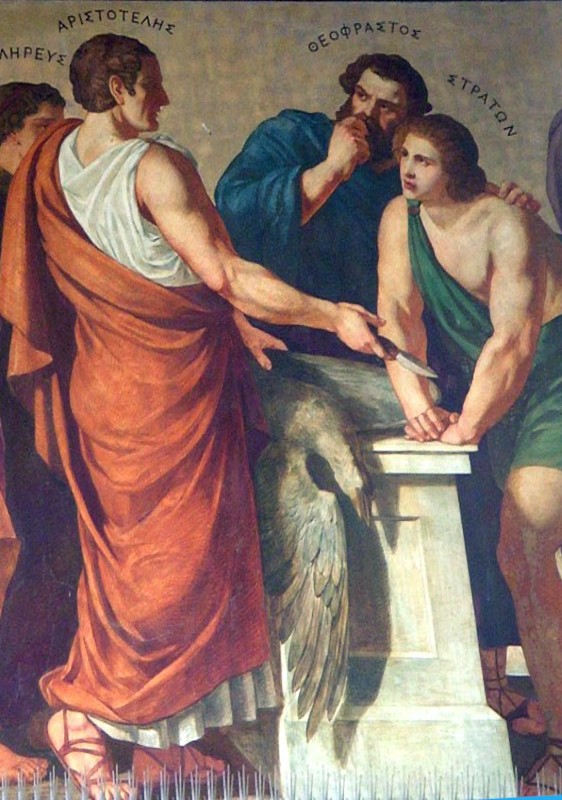|
Allelopathy
Allelopathy is a biological phenomenon by which an organism produces one or more biochemicals that influence the germination, growth, survival, and reproduction of other organisms. These biochemicals are known as allelochemicals and can have beneficial (positive allelopathy) or detrimental (negative allelopathy) effects on the target organisms and the community. Allelopathy is often used narrowly to describe chemically-mediated competition between plants; however, it is sometimes defined more broadly as chemically-mediated competition between any type of organisms. The original concept developed by Hans Molisch in 1937 seemed focused only on interactions between plants, between microorganisms and between microorganisms and plants. Allelochemicals are a subset of secondary metabolites, which are not directly required for metabolism (i.e. growth, development and reproduction) of the allelopathic organism. Allelopathic interactions are an important factor in determining species dis ... [...More Info...] [...Related Items...] OR: [Wikipedia] [Google] [Baidu] |
Ailanthus Altissima
''Ailanthus altissima'' ( ), commonly known as tree of heaven or ailanthus tree, is a deciduous tree in the quassia family. It is native to northeast and central China, and Taiwan. Unlike other members of the genus ''Ailanthus'', it is found in temperate climates rather than the tropics. The tree grows rapidly, and is capable of reaching heights of in 25 years. While the species rarely lives more than 50 years, some specimens exceed 100 years of age. It is considered a noxious weed and vigorous invasive species, and one of the worst invasive plant species in Europe and North America. In 21st-century North America, the invasiveness of the species has been compounded by its role in the life cycle of the also destructive and invasive spotted lanternfly. Description ''Ailanthus altissima'' is a medium-sized tree that reaches heights between with a diameter at breast height of about . The bark (botany), bark is smooth and light grey, often becoming somewhat rougher w ... [...More Info...] [...Related Items...] OR: [Wikipedia] [Google] [Baidu] |
Centaurea Stoebe
''Centaurea stoebe'', the spotted knapweed or panicled knapweed, is a species of ''Centaurea'' native to eastern Europe, although it has spread to North America, where it is considered an invasive species. It forms a tumbleweed, helping to increase the species' reach, and the seeds are also enabled by a feathery pappus. Description ''Centaurea stoebe'' is a biennial or short-lived perennial plant, and it usually has a stout taproot and pubescent stems when young. It has pale and deeply-lobed leaves covered in fine short hairs. First-year plants produce a basal rosette, alternate, up to long, deeply divided into lobes. It produces a stem in its second year of growth. Stem leaves are progressively less lobed, getting smaller toward the top. The stem is erect or ascending, slender, hairy and branching, and can grow up to tall. Protruding from black-tipped sepals, the flower blooms from July to September. The flower head is wide, with vibrant pink to lavender (or more rarely white ... [...More Info...] [...Related Items...] OR: [Wikipedia] [Google] [Baidu] |
Competition (biology)
Competition is an Biological interaction, interaction between organisms or species in which both require one or more Resource (biological), resources that are in Limiting factor, limited supply (such as food, water, or Territory (animal), territory). Competition lowers the Fitness (biology), fitness of both organisms involved since the presence of one of the organisms always reduces the amount of the resource available to the other. In the study of community ecology, competition within and between members of a species is an important biological interaction. Competition is one of many interacting Biotic component, biotic and Abiotic component, abiotic factors that affect Community (ecology), community structure, species diversity, and population dynamics (shifts in a population over time). There are three major Mechanism (biology), mechanisms of competition: interference, exploitation, and apparent competition (in order from most direct to least direct). Interference and exploitat ... [...More Info...] [...Related Items...] OR: [Wikipedia] [Google] [Baidu] |
Species Distribution
Species distribution, or species dispersion, is the manner in which a biological taxon is spatially arranged. The geographic limits of a particular taxon's distribution is its range, often represented as shaded areas on a map. Patterns of distribution change depending on the scale at which they are viewed, from the arrangement of individuals within a small family unit, to patterns within a population, or the distribution of the entire species as a whole (range). Species distribution is not to be confused with biological dispersal, dispersal, which is the movement of individuals away from their center of origin, region of origin or from a population center of high population density, density. Range In biology, the range of a species is the geographical area within which that species can be found. Within that range, distribution is the general structure of the species population, while dispersion is the variation in its population density. Range is often described with the foll ... [...More Info...] [...Related Items...] OR: [Wikipedia] [Google] [Baidu] |
Invasive Plants
An invasive species is an introduced species that harms its new environment. Invasive species adversely affect habitats and bioregions, causing ecological, environmental, and/or economic damage. The term can also be used for native species that become harmful to their native environment after human alterations to its food web. Since the 20th century, invasive species have become serious economic, social, and environmental threats worldwide. Invasion of long-established ecosystems by organisms is a natural phenomenon, but human-facilitated introductions have greatly increased the rate, scale, and geographic range of invasion. For millennia, humans have served as both accidental and deliberate dispersal agents, beginning with their earliest migrations, accelerating in the Age of Discovery, and accelerating again with the spread of international trade. Notable invasive plant species include the kudzu vine, giant hogweed (''Heracleum mantegazzianum''), Japanese knotweed (''Re ... [...More Info...] [...Related Items...] OR: [Wikipedia] [Google] [Baidu] |
Juglans Nigra
''Juglans nigra'', the eastern American black walnut, is a species of deciduous tree in the walnut family, Juglandaceae, native to central and eastern North America, growing mostly in riparian zones. Black walnut is susceptible to thousand cankers disease, which provoked a decline of walnut trees in some regions. Black walnut is allelopathic, releasing chemicals from its roots and other tissues that may harm other organisms and give the tree a competitive advantage, but there is no scientific consensus that this is a primary competitive factor. Black walnut is an important tree commercially, as the wood is a deep brown color and easily worked. Walnut seeds (nut (fruit), nuts) are cultivated for their distinctive and desirable taste. Walnut trees are grown for lumber and food, and processors have found additional markets for even the tough outer hulls by finely grinding them for use in products such as abrasive cleansers. Many cultivars have been developed for improved quality w ... [...More Info...] [...Related Items...] OR: [Wikipedia] [Google] [Baidu] |
Alfalfa
Alfalfa () (''Medicago sativa''), also called lucerne, is a perennial plant, perennial flowering plant in the legume family Fabaceae. It is cultivated as an important forage crop in many countries around the world. It is used for grazing, hay, and silage, as well as a green manure and cover crop. The name alfalfa is used in North America. The name lucerne is more commonly used in the United Kingdom, South Africa, Australia, and New Zealand. The plant superficially resembles clover (a cousin in the same family), especially while young, when glossary of leaf morphology#trifoliate, trifoliate leaves comprising round leaflet (botany), leaflets predominate. Later in maturity, leaflets are elongated. It has raceme, clusters of small purple flowers followed by fruits spiralled in two to three turns containing 10–20 seeds. Alfalfa is native to warmer temperate climates. It has been cultivated as livestock fodder since at least the era of the Ancient Greece, ancient Greeks and Ancient R ... [...More Info...] [...Related Items...] OR: [Wikipedia] [Google] [Baidu] |
Sponge
Sponges or sea sponges are primarily marine invertebrates of the animal phylum Porifera (; meaning 'pore bearer'), a basal clade and a sister taxon of the diploblasts. They are sessile filter feeders that are bound to the seabed, and are one of the most ancient members of macrobenthos, with many historical species being important reef-building organisms. Sponges are multicellular organisms consisting of jelly-like mesohyl sandwiched between two thin layers of cells, and usually have tube-like bodies full of pores and channels that allow water to circulate through them. They have unspecialized cells that can transform into other types and that often migrate between the main cell layers and the mesohyl in the process. They do not have complex nervous, digestive or circulatory systems. Instead, most rely on maintaining a constant water flow through their bodies to obtain food and oxygen and to remove wastes, usually via flagella movements of the so-called " collar ... [...More Info...] [...Related Items...] OR: [Wikipedia] [Google] [Baidu] |
Theophrastus
Theophrastus (; ; c. 371 – c. 287 BC) was an ancient Greek Philosophy, philosopher and Natural history, naturalist. A native of Eresos in Lesbos, he was Aristotle's close colleague and successor as head of the Lyceum (classical), Lyceum, the Peripatetic school, Peripatetic school of philosophy in Athens. Theophrastus wrote numerous treatises across all areas of philosophy, working to support, improve, expand, and develop Aristotelian system, the Aristotelian system. He made significant contributions to various fields, including ethics, metaphysics, botany, and natural history. Often considered the "father of botany" for his groundbreaking works "Historia Plantarum (Theophrastus), Enquiry into Plants" () and "On the Causes of Plants", () Theophrastus established the foundations of Botany, botanical science. His given name was (Ancient Greek: ); the nickname Theophrastus ("divine speaker") was reputedly given to him by Aristotle in recognition of his eloquent style. He came to ... [...More Info...] [...Related Items...] OR: [Wikipedia] [Google] [Baidu] |
Pigweed
Pigweed can mean any of a number of weedy plants which may be used as pig fodder: * ''Amaranthus'' species ** ''Amaranthus albus'', white pigweed, tumble pigweed ** '' Amaranthus blitoides'', prostrate pigweed ** '' Amaranthus californicus'', California pigweed ** '' Amaranthus fimbriatus'', fringed pigweed ** '' Amaranthus hybridus'', smooth pigweed ** '' Amaranthus palmeri'', the 'pigweed' resistant to glyphosate in the US Southeast ** ''Amaranthus retroflexus'', redroot pigweed * ''Chenopodium album'' white goosefoot * ''Polygonum aviculare ''Polygonum aviculare'' or common knotgrass is a plant related to buckwheat and dock. It is also called prostrate knotweed, birdweed, pigweed and lowgrass. It is an annual found in fields and wasteland, with white flowers from June to October. I ...'' * '' Portulaca'' species See also * Hogweed {{Plant common name ... [...More Info...] [...Related Items...] OR: [Wikipedia] [Google] [Baidu] |
Casuarina Litter
''Casuarina'', also known as she-oak, Australian pine and native pine, is a genus of flowering plants in the family Casuarinaceae, and is native to Australia, the Indian subcontinent, Southeast Asia, Pacific Islands, islands of the western Pacific Ocean, and eastern Africa. Plants in the genus ''Casuarina'' are Monoecy, monoecious or Dioecy, dioecious trees with green, pendulous, photosynthetic branchlets, the leaves reduced to small scales arranged in Whorl (botany), whorls around the branchlets, the male and female flowers arranged in separate spikes, the fruit a cone containing grey or yellowish-brown winged seeds. Description Plants in the genus ''Casuarina'' are dioecious trees (apart from ''C. equisetifolia'' that is monoecious), with fissured or scaly greyish-brown to black bark. They have soft, pendulous, green, Photosynthesis, photosynthetic branchlets, the leaves reduced to scale-like leaves arranged in whorls of 5 to 20 around the branchlets. The branchlets are seg ... [...More Info...] [...Related Items...] OR: [Wikipedia] [Google] [Baidu] |
Common Era
Common Era (CE) and Before the Common Era (BCE) are year notations for the Gregorian calendar (and its predecessor, the Julian calendar), the world's most widely used calendar era. Common Era and Before the Common Era are alternatives to the original Anno Domini (AD) and Before Christ (BC) notations used for the same calendar era. The two notation systems are numerically equivalent: " CE" and "AD " each describe the current year; "400 BCE" and "400 BC" are the same year. The expression can be traced back to 1615, when it first appears in a book by Johannes Kepler as the (), and to 1635 in English as " Vulgar Era". The term "Common Era" can be found in English as early as 1708, and became more widely used in the mid-19th century by Jewish religious scholars. Since the late 20th century, BCE and CE have become popular in academic and scientific publications on the grounds that BCE and CE are religiously neutral terms. They have been promoted as more sensitive to non-Christia ... [...More Info...] [...Related Items...] OR: [Wikipedia] [Google] [Baidu] |










